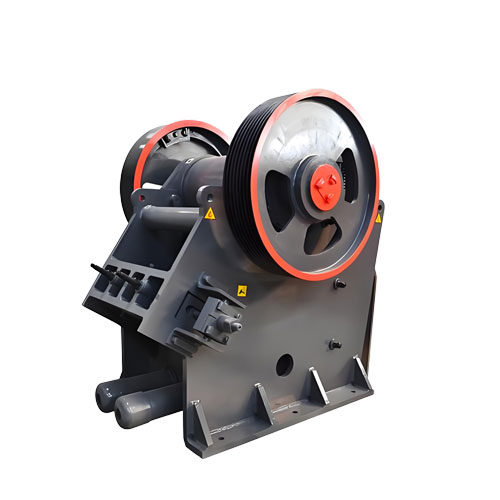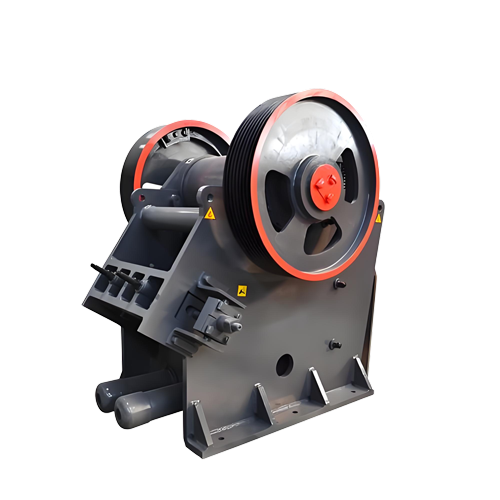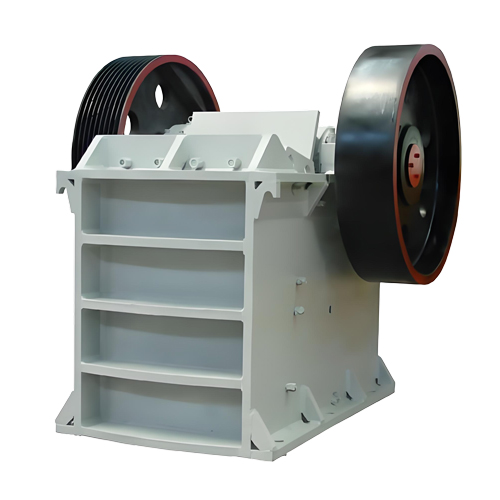What are the parts of a jaw crusher?
In the world of aggregate processing, mining, and demolition recycling, the jaw crusher stands as a cornerstone piece of equipment. Its robust and relatively simple design has made it a reliable workhorse for reducing large, hard materials into smaller, more manageable sizes.
But have you ever wondered what’s inside this powerful machine? Understanding the main components of a jaw crusher is key to appreciating how it works, how to operate it efficiently, and how to maintain it for long-lasting performance.
Let’s break down the essential parts of a jaw crusher.

1. The Crushing Chamber: The Heart of the Operation
The crushing chamber is the central zone where the actual size reduction happens. It’s formed by two vertical jaws:
-
Fixed Jaw: This is the stationary part of the crusher. It’s mounted solidly to the crusher’s main frame and serves as the anvil against which the rock is crushed.
-
Movable Jaw: This jaw is positioned at an angle to the fixed jaw and moves in a rhythmic “chewing” motion. It’s driven by an eccentric shaft and is the component that applies massive compressive force to the material.
2. Jaw Dies / Cheek Plates: The Replaceable Warriors
To protect the jaws themselves from wear and tear, they are fitted with replaceable liners.
-
Jaw Dies (or Jaw Plates): These are the manganese steel plates bolted directly onto the surface of both the fixed and movable jaws. They are the parts that make direct contact with the raw material. Their profile can be smooth, corrugated, or toothed, depending on the application.
-
Cheek Plates: These are protective liners mounted on the sides of the crusher frame, safeguarding it from abrasion caused by the material.

3. The Pitman: The Mover of the Movable Jaw
The pitman is the main moving component. It’s essentially a robust iron casting that acts as the connecting link between the movable jaw and the eccentric shaft. The pitman oscillates back and forth, transferring the rotational force from the eccentric shaft into the crushing motion of the movable jaw.
4. Eccentric Shaft: The Driver of the Motion
Running through the pitman and supported by heavy-duty bearings on the crusher frame, the eccentric shaft is the engine of the crushing action. It has an offset section (the “eccentric”) that converts the rotary motion of the motor and pulleys into the up-and-down oscillating motion of the pitman and movable jaw.
5. Toggle Plate: The Safety Guardian
The toggle plate is a crucial safety and mechanical component. It’s a slab of cast iron located behind the pitman and between it and the crusher frame. It serves two critical functions:
-
Safety Mechanism: It’s designed to be the weakest mechanical link. If an uncrushable object (like tramp iron) enters the chamber, the toggle plate will fracture first, preventing more expensive damage to other components like the pitman or eccentric shaft.
-
Setting Adjustment: In many crusher designs, changing the toggle plate or adjusting its position is how you control the size of the crushed product output (the closed-side setting).
6. Tension Rod and Spring: Holding It All Together
This assembly is responsible for maintaining tension on the toggle plate and ensuring the movable jaw moves in a controlled manner on its return stroke. The spring provides the necessary flexibility to absorb shocks and allow the toggle plate to break in case of an overload, protecting the crusher.
7. Flywheels: Storing and Releasing Energy
You’ll typically find one or two large flywheels on the sides of the crusher. They are mounted on the eccentric shaft and have a vital role:
-
Energy Storage: During the non-crushing half of the cycle (the return stroke), the motor adds energy to spin the flywheels.
-
Energy Release: During the crushing stroke, the flywheels release their stored kinetic energy, helping to create a consistent, powerful crushing force and reducing the load on the motor.
8. Adjustment Wedge: For Fine-Tuning the Output
Modern jaw crushers often feature a hydraulic or mechanical wedge system to adjust the closed-side setting (CSS)—the smallest gap between the jaws at the bottom. This allows operators to quickly and precisely control the final product size without needing to change the toggle plate.
Conclusion: A Symphony of Components
A jaw crusher is a masterpiece of mechanical simplicity and power. Each part, from the robust frame to the sacrificial toggle plate, plays a specific and vital role. Understanding these components is the first step toward optimal operation, effective troubleshooting, and proactive maintenance, ensuring your jaw crusher remains a productive asset on your site for years to come.
Related Products
Inquiry
Please leave us your requirements, we will contact you soon.





